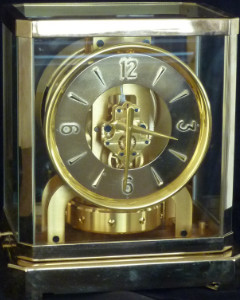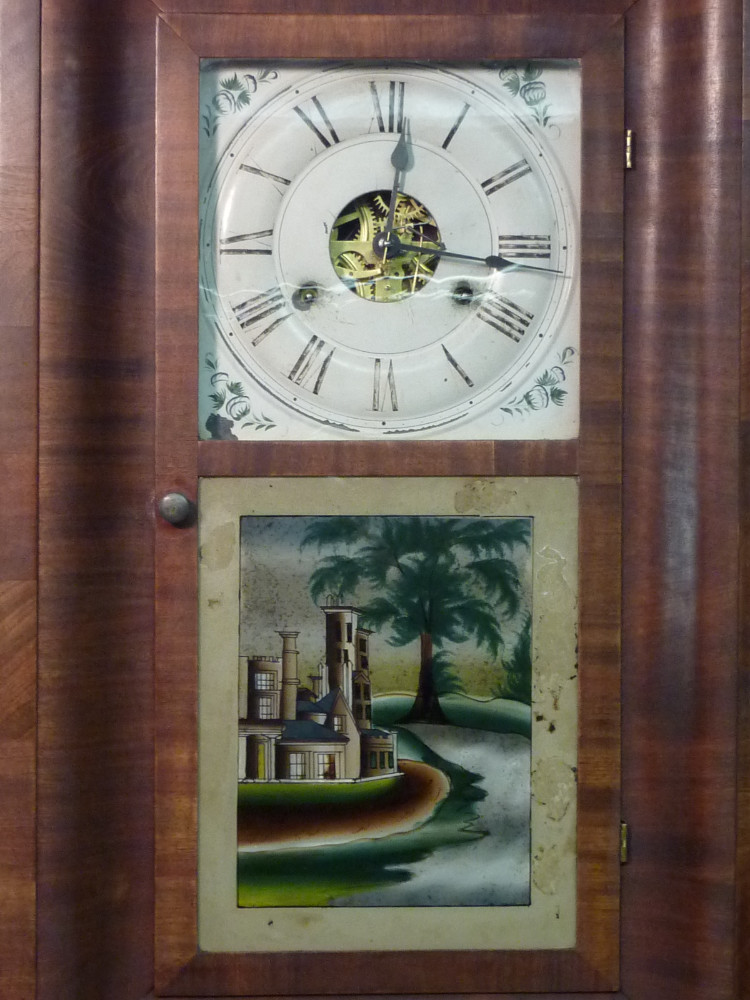
SETH THOMAS OGEE CLOCK
Ogee Wall Clock. Mahogany veneer case. Brass 30 hour, weight-driven movement with strike. Made by Seth Thomas, Plymouth Hollow, Conn., c. 1845. H. 26 1/2.” This was a popular model before the Civil War. The glass that covered the pendulum and strike hammer and coil below the clock face was hand painted. These were very loud clocks with a rapid strike marking the hour. There are many still around today, but it is rarer to find them with the painted glass in the original and unblemished condition.
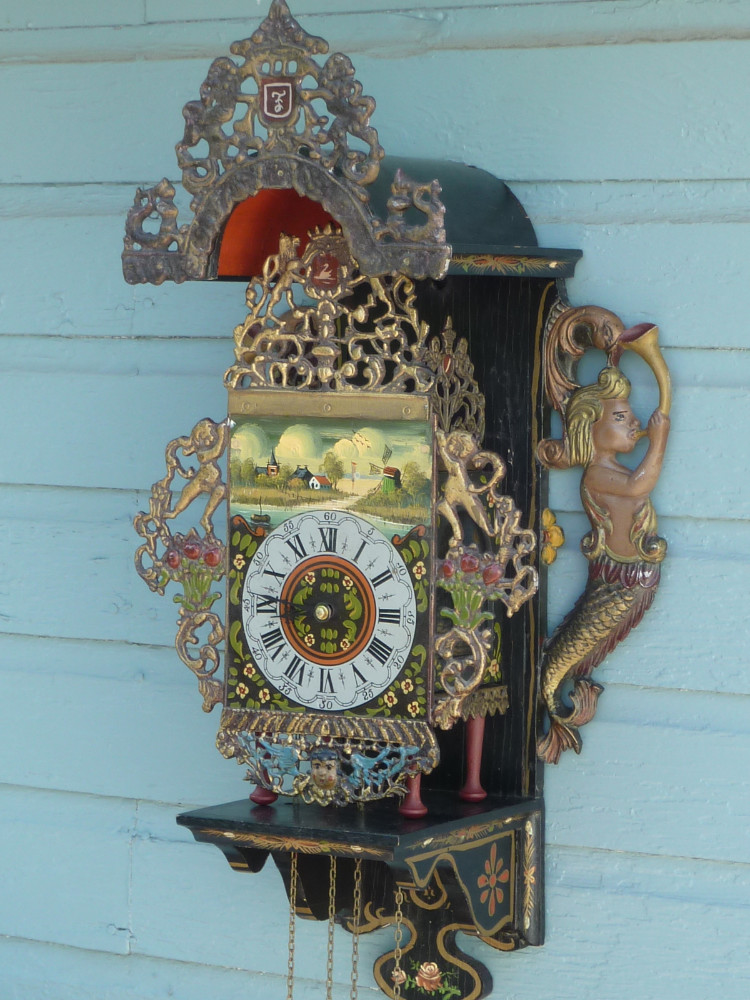
DUTCH FOLKLORE STOOL CLOCK
I found this clock at Eclectix, a unique consignment store, in Boulder, Colorado. This a Dutch Folklore Stoel Clock, circa 1930. It is called a stoel, or stool, because the clock case has legs like a stool and sits in the housing which hangs from the wall. These clocks come from the Province of Friesland (the “F” on the filigree at the top of the housing is for Friesland) which is in the northern part of The Netherlands. The case and housing are made of wood with cast iron mermaids, cherubs, and filigree at the top, sides and bottom all painted in the Hindeloopen Style named after the City of Hindeloopen. This particular clock is 31″ high, 16″ wide, and 12″ deep. It has a weight driven eight day movement with a pendulum and Strikes on the half hour and strikes out the number of hours.
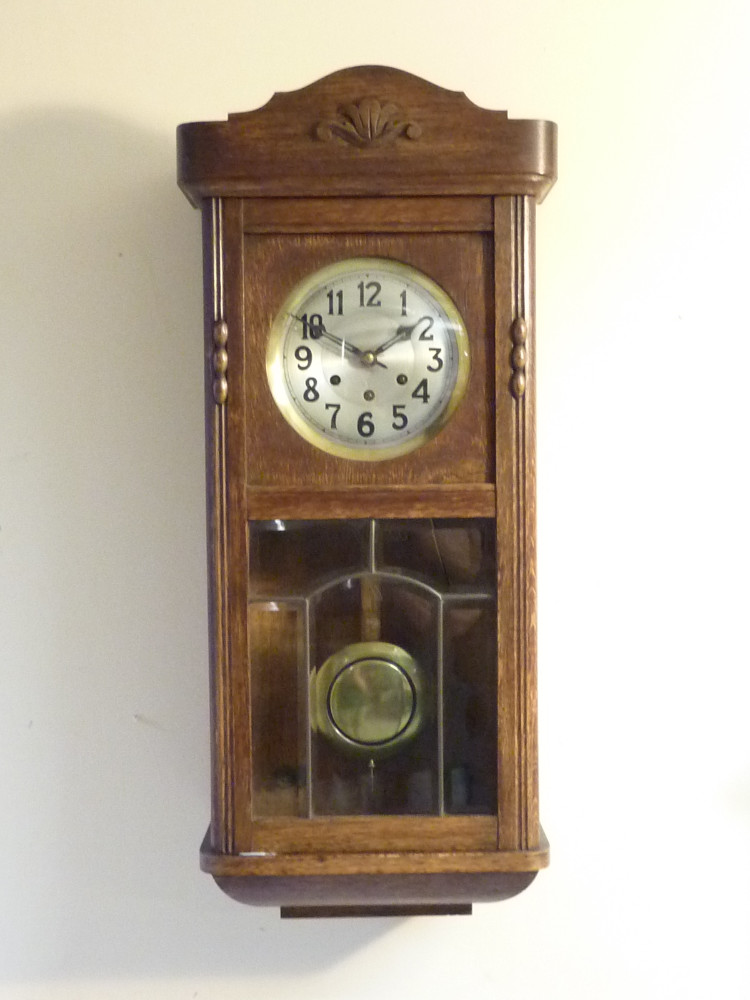
GUSTAV BECKER WALL CLOCK
This Gustav Becker Wall Clock was made circa 1926 which reflects the Arts and Crafts style of the time. Oak case with geometric cut glass motif. It is 30″ tall, 13″ wide, and 6″ deep. Read more about Gustav Becker
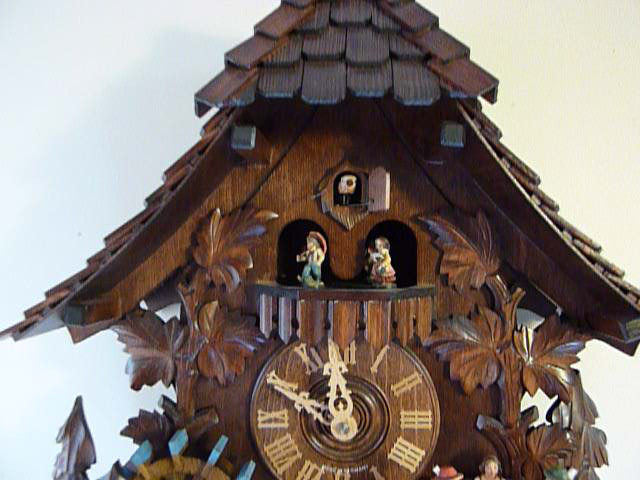
VERY BUSY CUCKOO CLOCK
This is a three weight Swiss Cuckoo Clock that I repaired which has a lot going on. The cuckoo announces the hour then dancers turn to the music while two men keep time to the music pounding their beer steins on the table as the buxom lady, probably the waitress, looks bored with their antics. All this and a turning water wheel. See the clock in action.
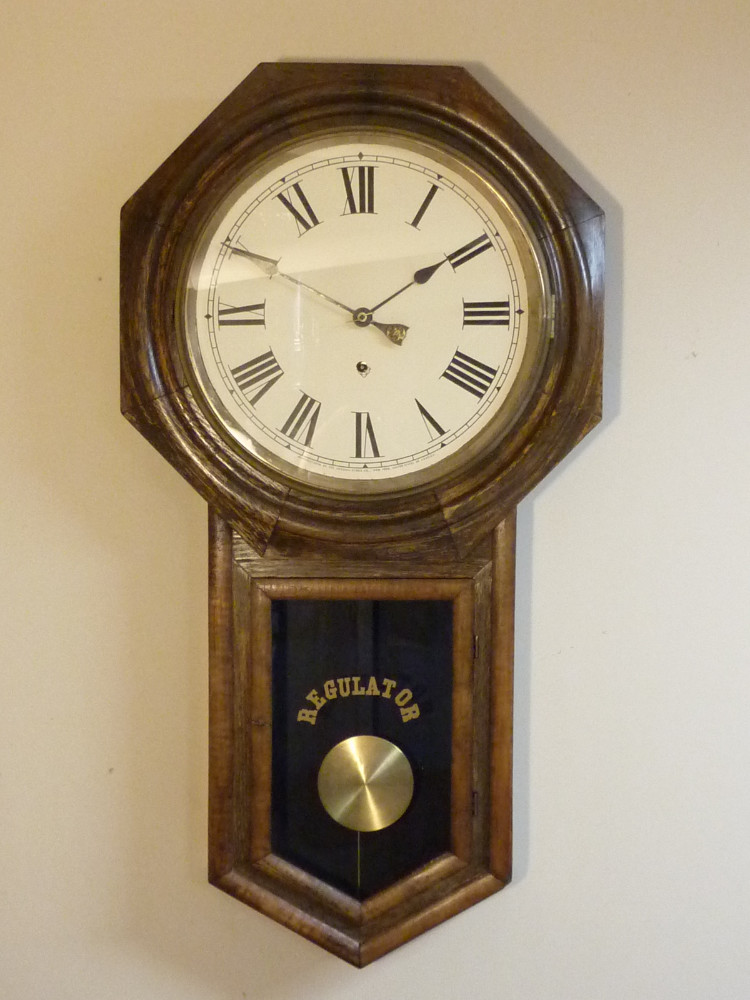
ANSONIA REGULATOR WALL CLOCK
This is an Ansonia Regulator Wall Clock, circa 1920. A single spring driven clock that tells the time only, there are no chimes or gongs. This clock was a victim of the September 2013 floods in Boulder, CO and surrounding area. I completely restored this clock, case and all. Originally there was an Ansonia logo on the glass door, but that was broken and replaced with a new glass and a decal.
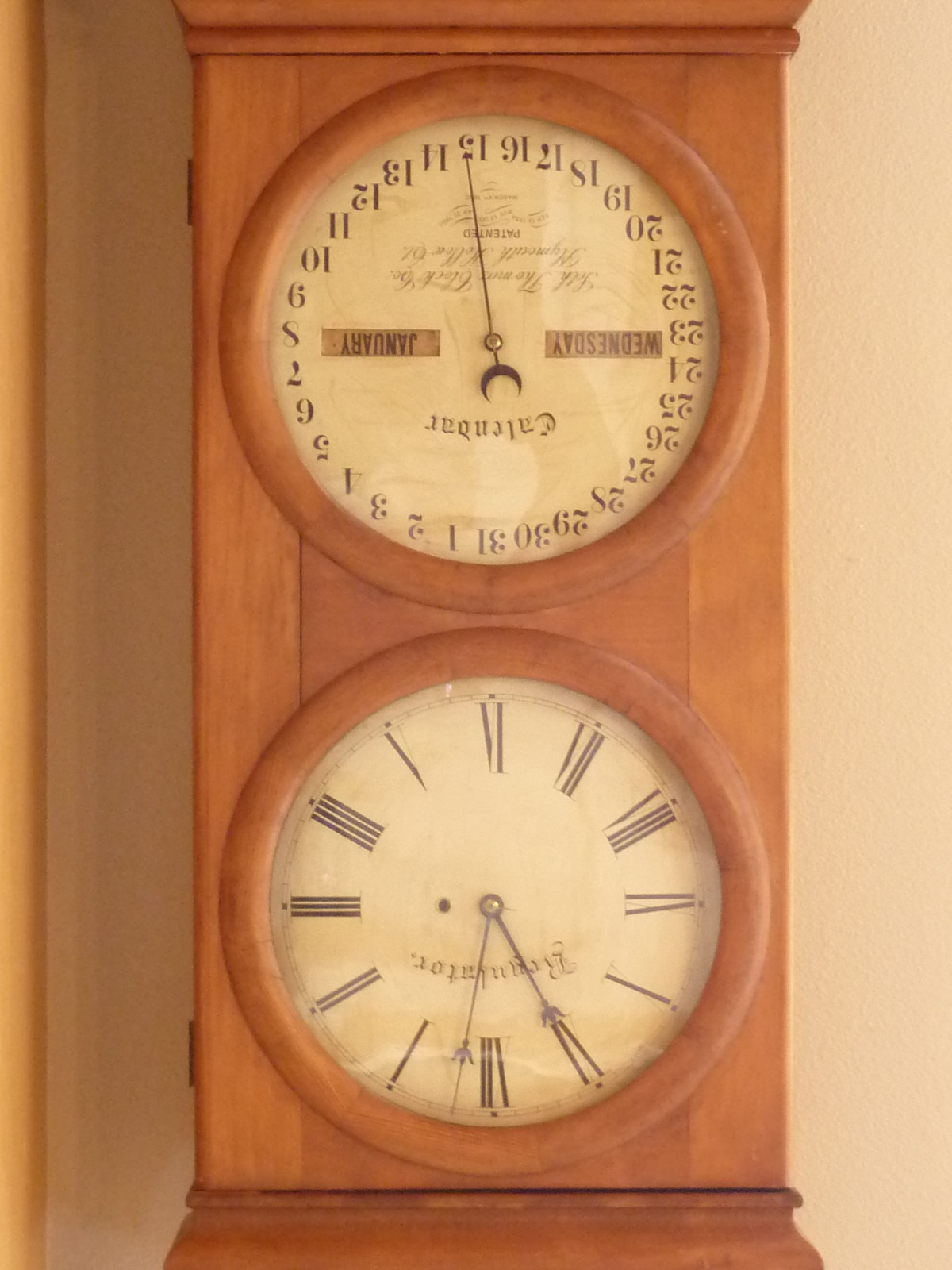
SETH THOMAS CALENDER CLOCK
Seth Thomas Calender Clock. This clock is from the late 19th or early 20th Century. It is a single weight driven eight day clock that tells the time of day, the day of the week, the day of the month, the month and it allows for LEAP YEAR; all this done mechanically with cogs wheels and levers driven by gravity. The clock is quite large and heavy; it stand four feet tall and is eighteen inches wide and hangs on the wall. It does have a pendulum which cannot be seen as it swings behind the two dials.
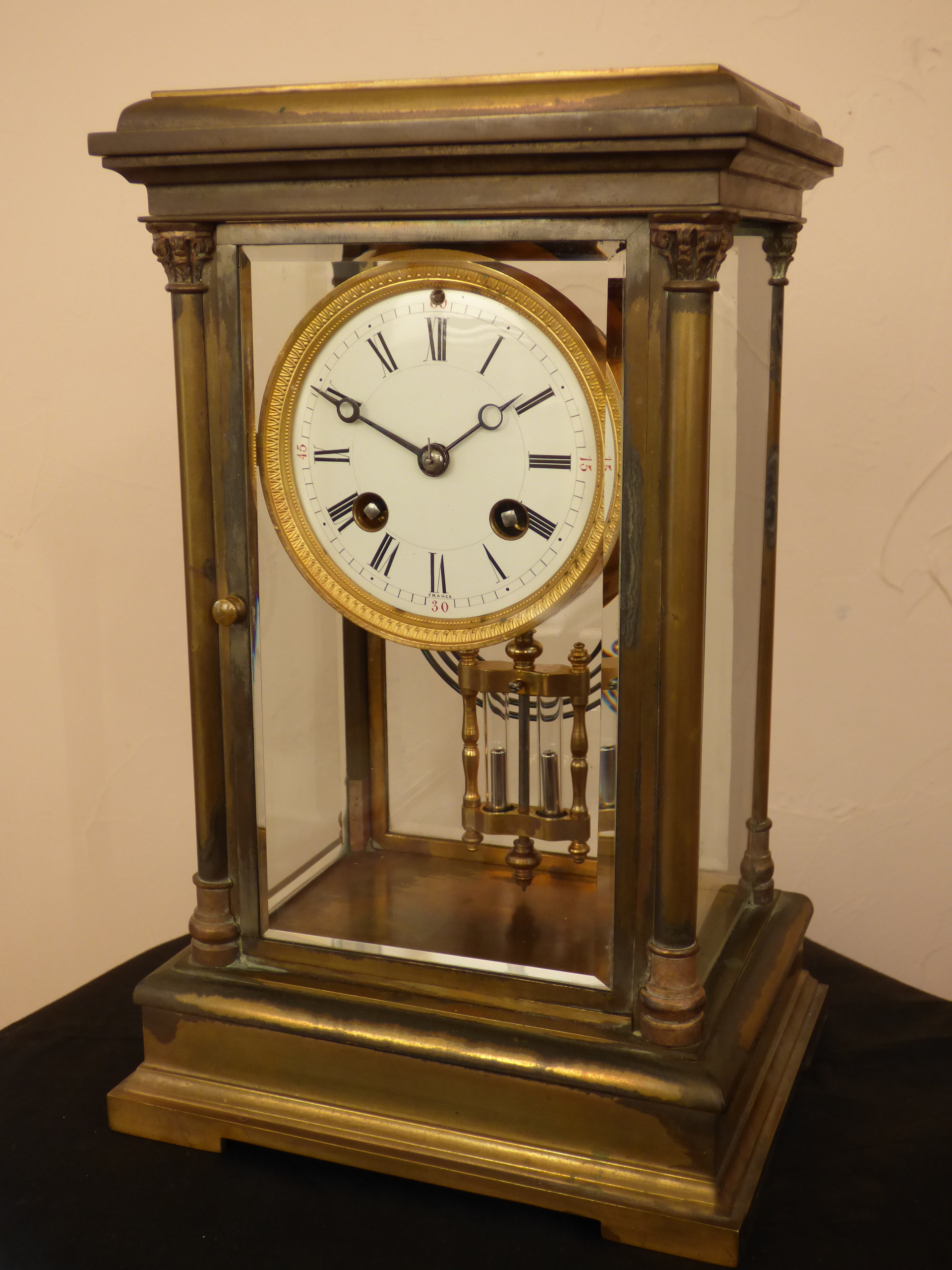
FRENCH CRYSTAL REGULATOR CLOCK
This French Crystal Regulator Clock is probably Turn of of the Century. It is call a “crystal regulator” because it has glass on all four sides (in this case all the glass is beveled). The pendulum is the regulator and in this clock the pendulum contains two glass vials with mercury. These glass vials if damaged are now replaced with faux ones as mercury is no longer readily available. These are usually very high quality clocks with regard to their movements, but condition is very important as to their value. Many are gilded or if not, are solid brass. This one is not; it was brass plated but most of the plating has worn off which has left a nice patina, while the bezel still has the original gilding. It is an eight day clock that strikes on the half hour and strikes out the hours and keeps excellent time. It stands roughly 12″ high which is a fairly common height for this type of clock. There are smaller ones and of course the larger and more ornate ones are more valuable, especially if they are in good condition.
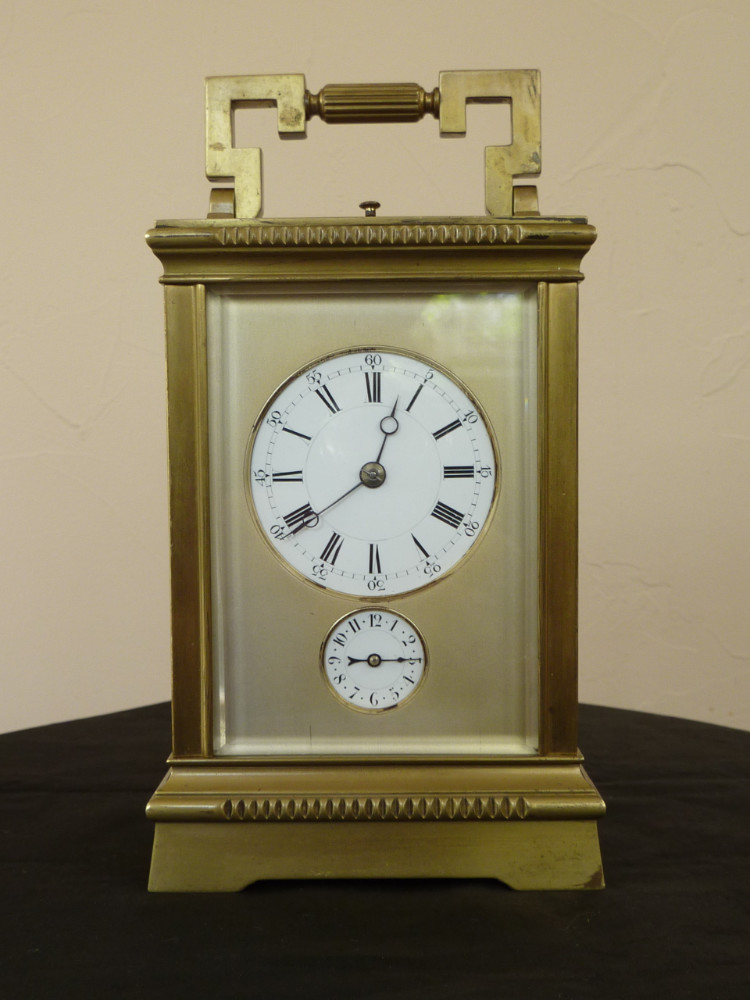
ENGLISH BRASS CARRIAGE CLOCK
English Carriage Clock. Beautiful brass with beveled glass on all four sides and at the top to view escape wheel. Clock was not striking properly and required major repair. Now it strikes on the 1/4, 1/2, 3/4, & at the top of the hour as well as strikes out the number of hours. Clock also has an alarm function. Made in England around 1930, it has a slightly Oriental motif with the brushed brass face plate accenting the enamel clock and alarm dial and the handle has an Oriental shape. It is rather large for a Carriage Clock standing almost a foot to the top of the handle.
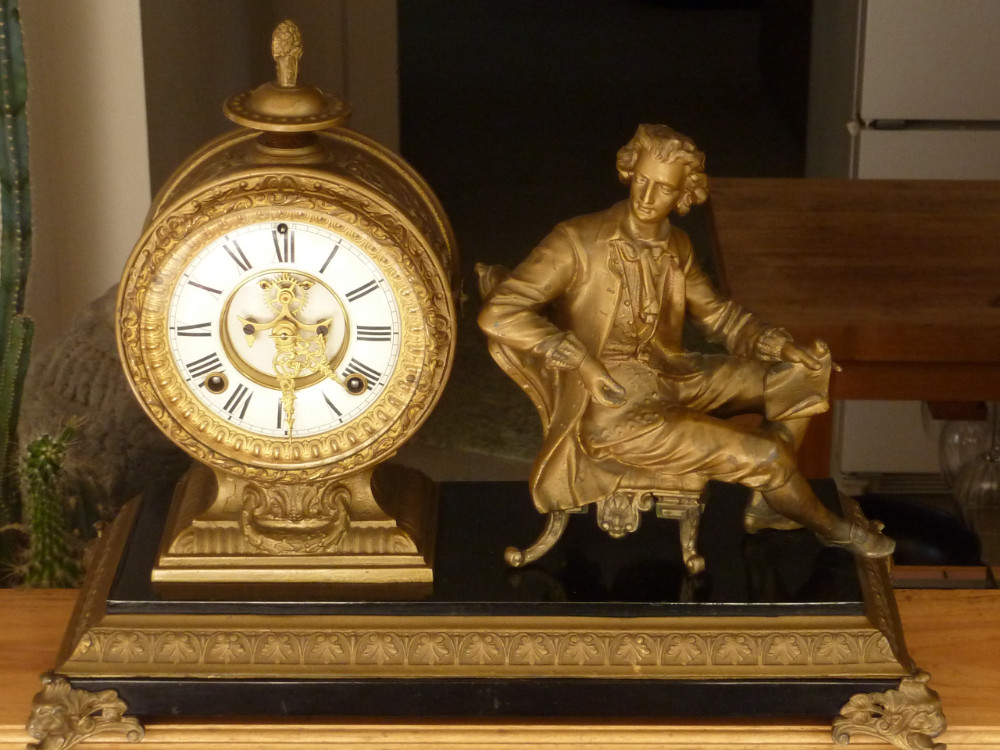
ANSONIA “MOZART” CLOCK
This Ansonia “Mozart” Clock is cast bronze with Ormolu gilding. Ormolu was used in lieu of gold gilding and is made from bronze, zinc, and tin; its use was discontinued by the late 1800s, dating this clock to around 1890. You can see in the photo that this gilding is much brighter around the dial which is under the beveled crystal protecting it from oxidation. The dial is two separate pieces of white enamel with an open escapement. The clock chimes on the half hour and rings out the hours. It is quite heavy and large measuring 18″ wide and 14″ high.
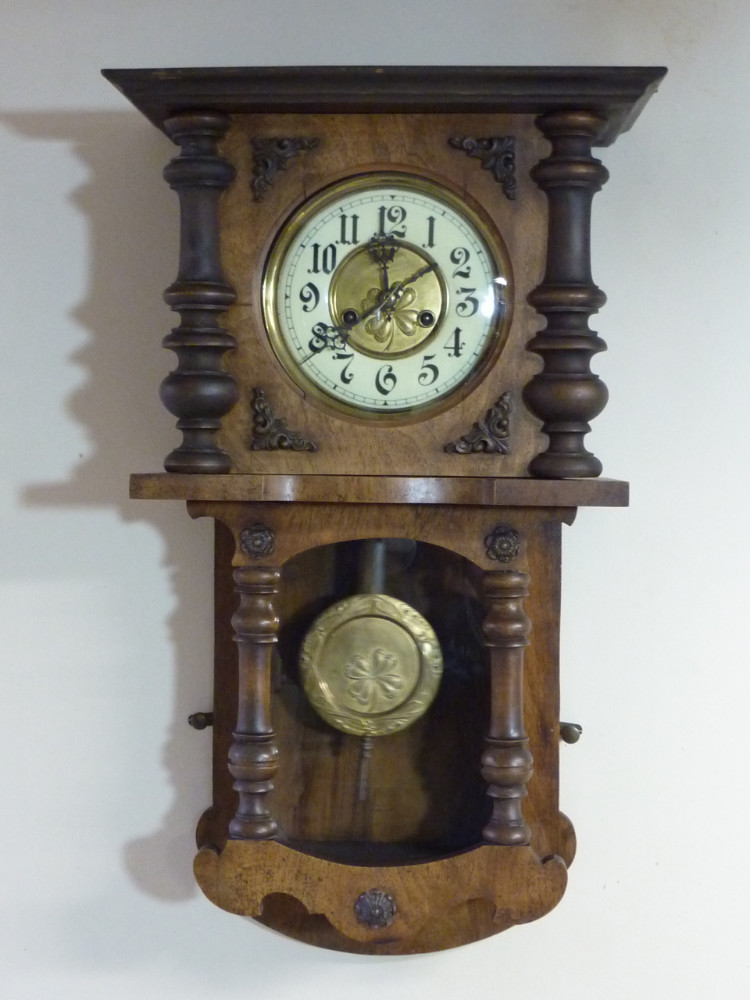
BLACK FOREST CLOCK
Black Forest Clock with porcelain and brass dial with four leaf clover on dial and pendulum, circa 1880.
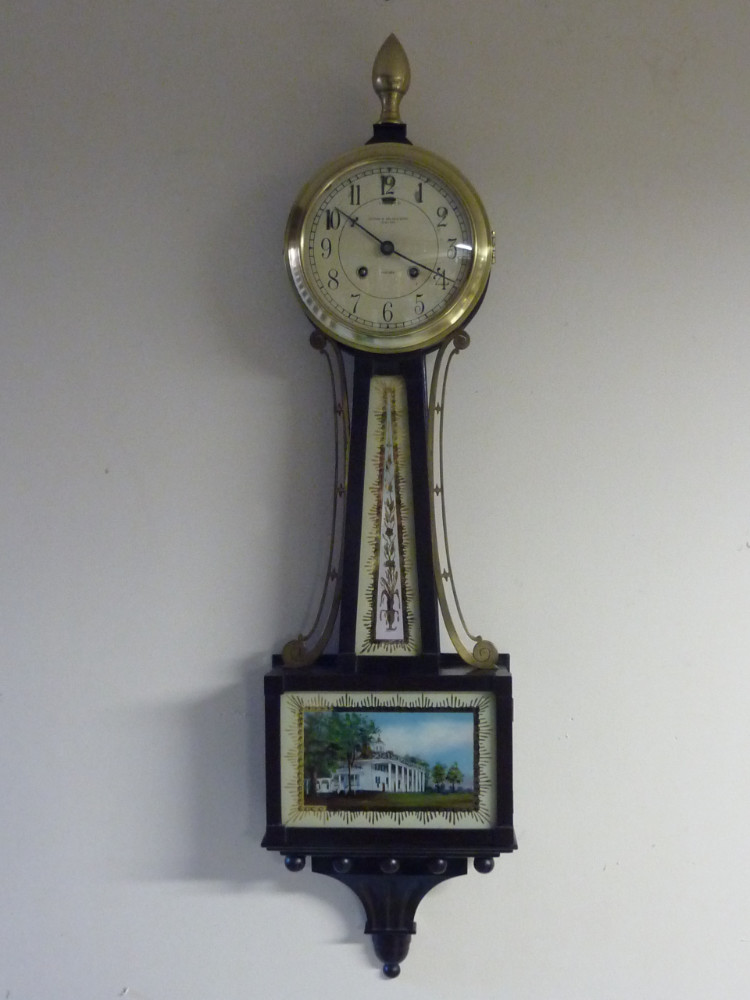
CHELSEA BANJO CLOCK
 Chelsea Banjo Clock 33″ high. Beautiful hand painted glass picture of Mt. Vernon, George Washington’s home in Virginia at bottom. Clock has no pendulum in spite of its length; timing is controlled by an escape platform with hairspring, balance wheel, verge, and escape wheel. Clock strikes on the half hour and strikes out the hours. Brass finial with brass scrolling down both sides and brass bezel. Crystal is convex. Clock case and face made by George W. Welsh’s Sons, New York which is printed on dial.
Chelsea Banjo Clock 33″ high. Beautiful hand painted glass picture of Mt. Vernon, George Washington’s home in Virginia at bottom. Clock has no pendulum in spite of its length; timing is controlled by an escape platform with hairspring, balance wheel, verge, and escape wheel. Clock strikes on the half hour and strikes out the hours. Brass finial with brass scrolling down both sides and brass bezel. Crystal is convex. Clock case and face made by George W. Welsh’s Sons, New York which is printed on dial.
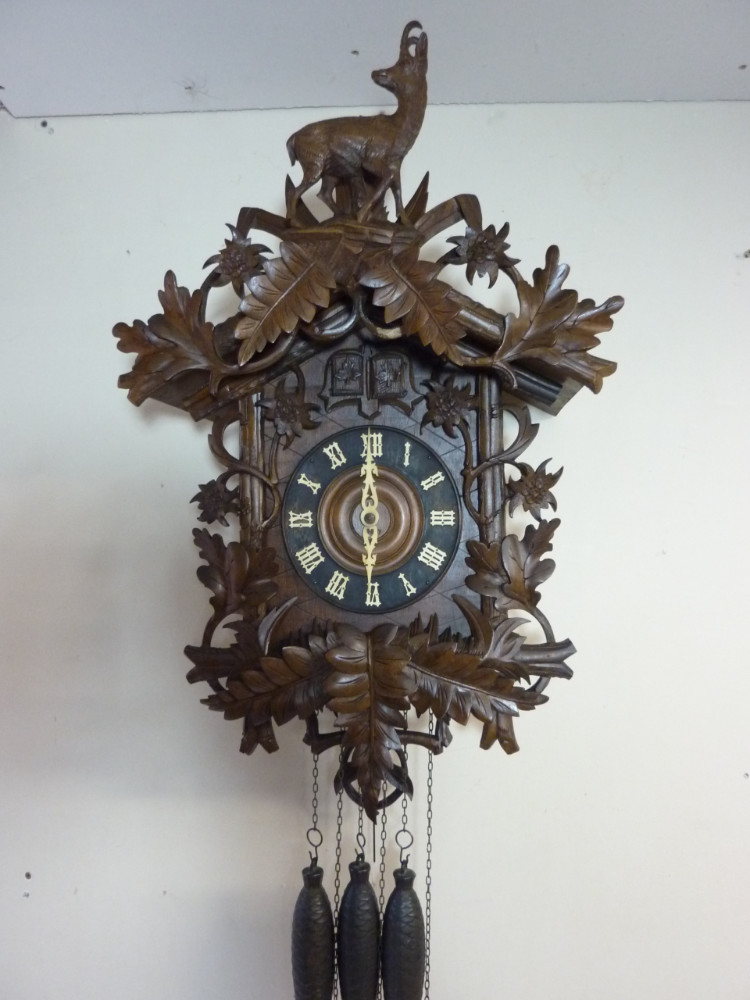
BEAUTIFUL 19TH CENTURY CUCKOO CLOCK
This cuckoo clock, circa 1850, has some unique features not found on later cuckoos. There are two cuckoos; the one on the left cuckoos once on the 1/4 hr., twice on the 1/2 hr., three times on the 3/4 hr., and 4 times at the top of the hour. The cuckoo on the right cuckoos the number of hours. The case and figures on the clock are all hand carved and in exceptional condition considering that the clock is 170 yrs. old. It was quite a job to repair it but now everything works. The only drawback is that it is a 30 hr. clock rather than an 8 day clock, so the weights have to be raised every day.
